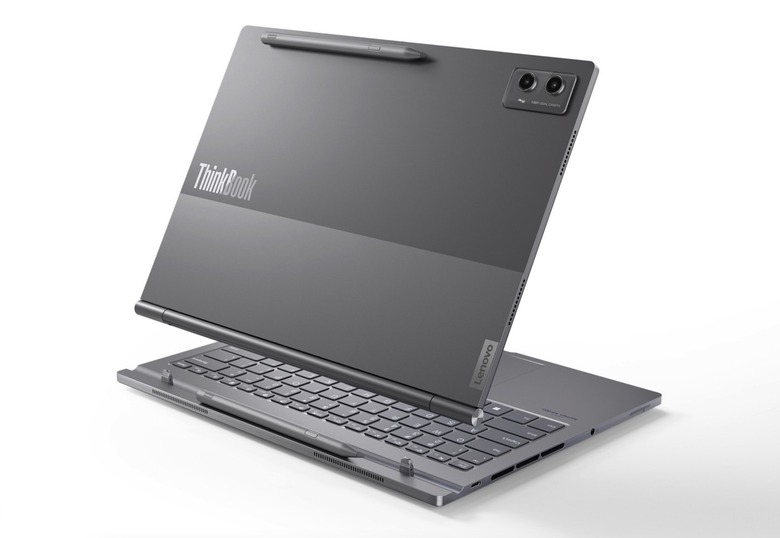I'm A Mac User, But Lenovo's Amazing Android-Windows Laptop Makes Me So Jealous
I've been dreaming for years about a laptop/tablet convertible that can run different operating systems depending on the mode it's used in. In laptop mode, you'd get a full desktop operating system, powerful specs, and the multitasking you need for work. Snap the screen out, and you get a tablet that runs a lighter mobile OS ready for entertainment and light work.
As a Mac and iPhone user, I hoped Apple would eventually deliver a MacBook/iPad contraption that worked like that. Of course, I know full well that Apple will never merge these products.
Fast-forward to CES 2024, and Lenovo's new 2-in-1 has me crazy jealous. The ThinkBook Plus Gen 5 Hybrid is the computer I described. It's a laptop/tablet hybrid that runs two operating systems. You get Windows 11 when the touchscreen is docked in its keyboard. Otherwise, the ThinkBook Plus Gen 2 is an Android tablet. I'd love nothing more than to be able to get that experience on my MacBook Pro.
Each half of the ThinkBook Plus Gen 5 Hybrid 2-in-1 is actually a totally separate computer. In the keyboard dock, there's an Intel Core Ultra 7 computer with all the fixings. It's got 32GB of RAM, a 1TB SSD, and a 75WHr battery.
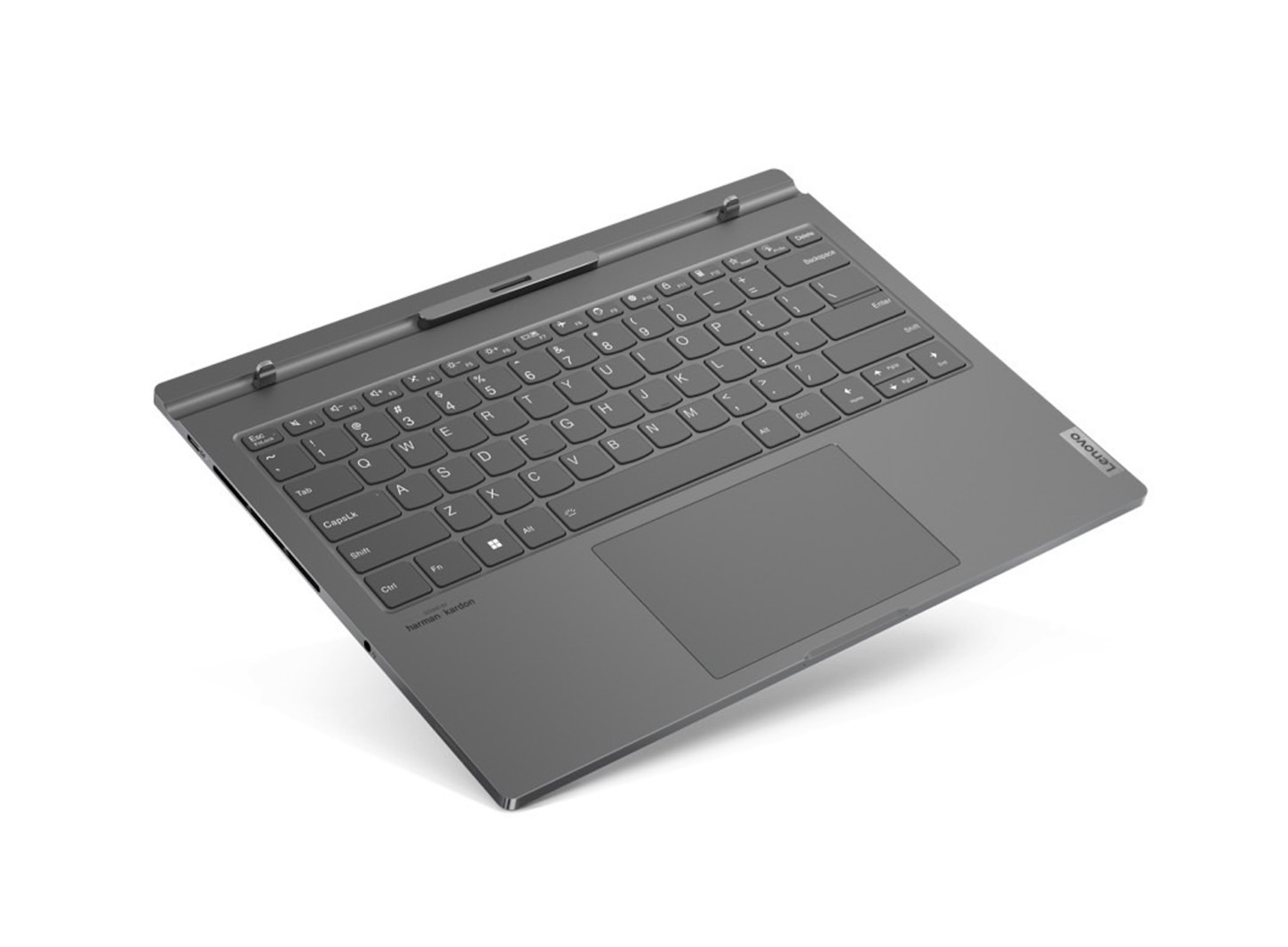
Meanwhile, the 14-inch 2.8K OLED touchscreen houses a second, smaller battery at 38WHr, which powers the Android computer.
The tablet runs on the older Snapdragon 8 Plus Gen 1 processor, paired with 12GB of RAM and 256GB of flash storage. That's fast LPDDR5x RAM across the board, by the way.
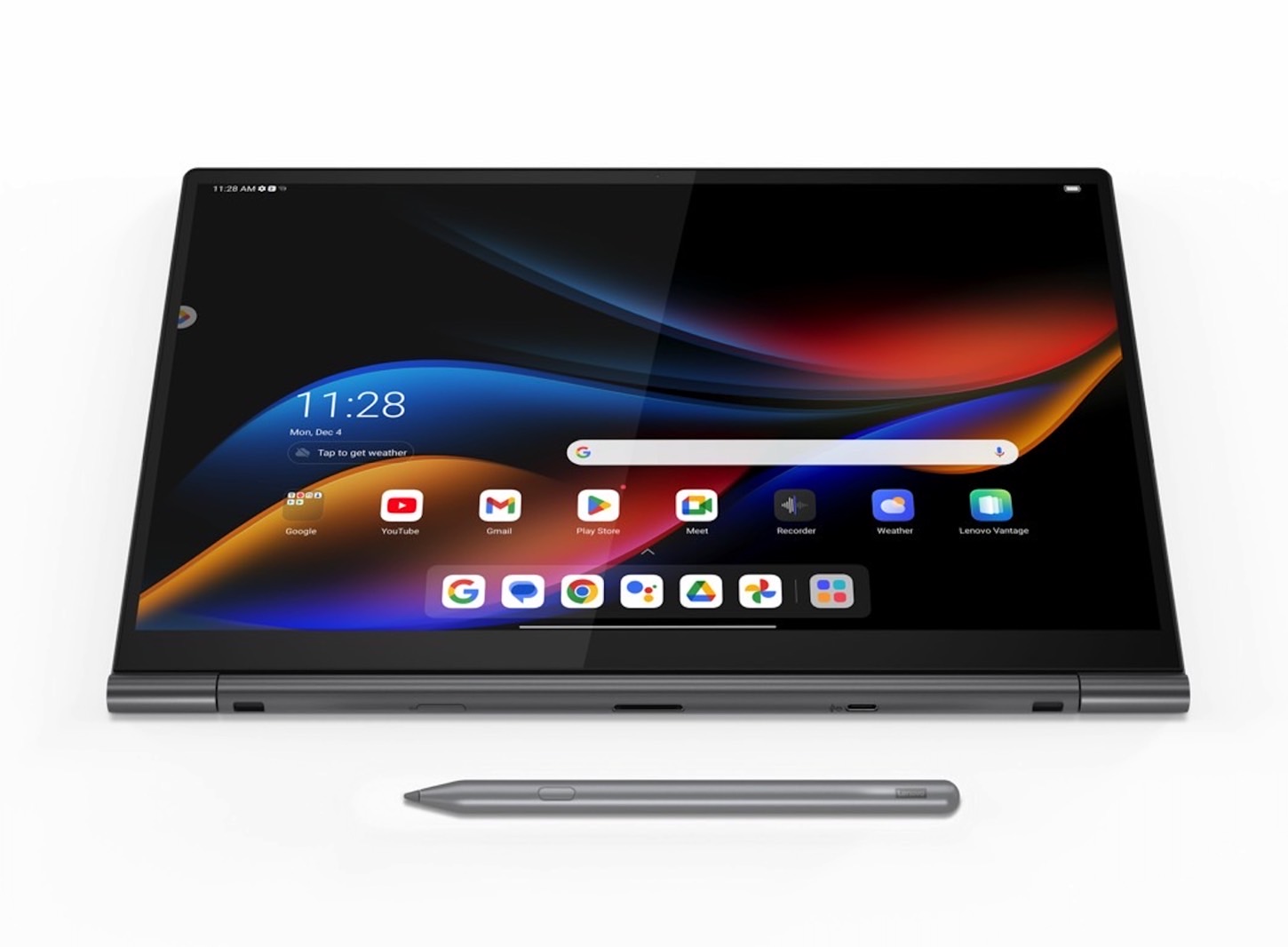
You'll have to shell out $2,000 for these two computers that will ship as one device sometime this spring. But considering the specs above and the fact that you're getting two computers that serve two different purposes, I'd say that's quite a bargain.
And if you're wondering whether you can use the Windows 11 PC and Android tablet simultaneously, the answer is yes. Lenovo explains in a press release that the keyboard dock (ThinkBook Plus Gen 5 Hybrid Station) can be connected to an external display to work as a Windows 11 desktop. The Android tablet would then work separately.
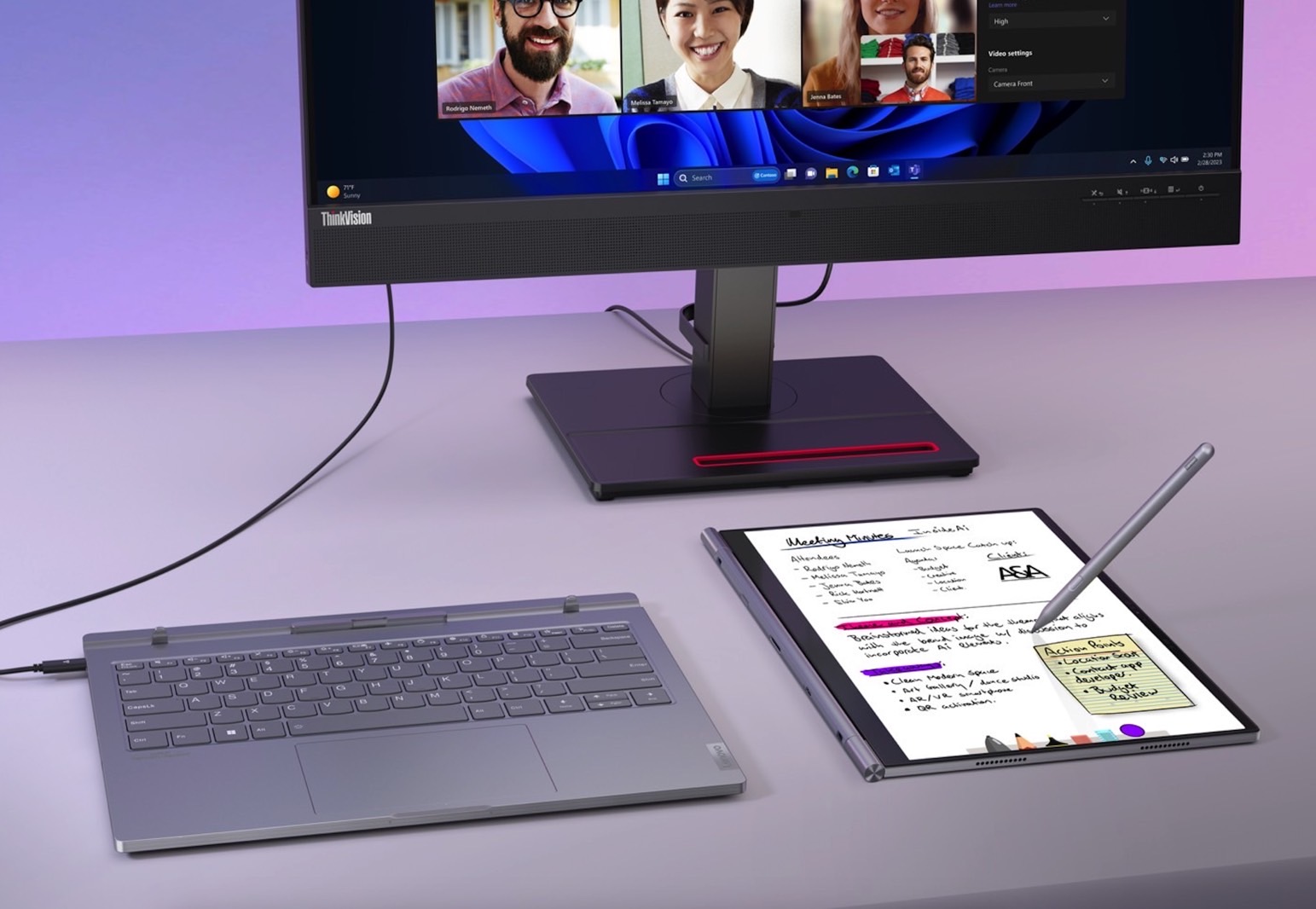
You can also use the ThinkBook Plus Gen 5 Hybrid as a Windows 11 laptop or a tablet docked into a keyboard. I'd have expected the former. After all, this is a Windows laptop. But the second experience is also great for those times when you need a keyboard with your Android tablet.
As for battery life, Lenovo doesn't offer an estimate but says there's some intelligent stuff going on in the background to maximize battery life:
With long-lasting batteries on both devices that intelligently manage power delivery, Wi-Fi connectivity, and wireless projection capability on supported external displays, users can multitask more efficiently for longer, and often without cables. The Lenovo ThinkBook Plus Gen 5 Hybrid is more than just two devices—it's a game-changer.
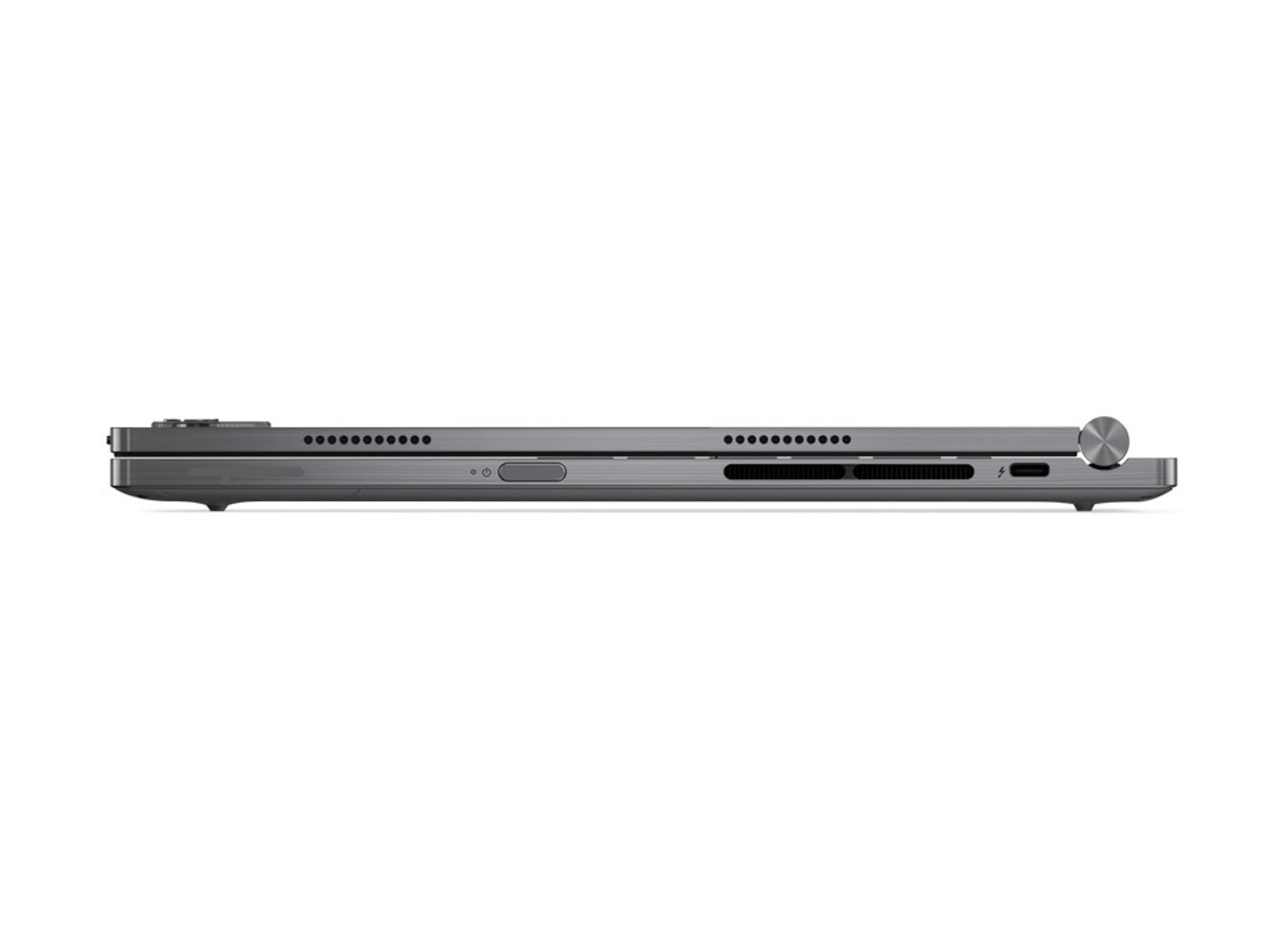
As for the software, Windows 11 and Android come from different universes, but they can work together. You can stream Android apps on the Windows 11 laptop, Lenovo says. It's unclear whether it's the apps running on the Android tablet, but it's still a useful feature that can help you make the best of both worlds. Not to mention that cloud storage and apps can keep you productive while moving between Windows 11 and Android.
Looking at the price tag again, I'll also say you could buy a MacBook and iPad for roughly the same price, though you'd have to compromise on one of them when it comes to specs.
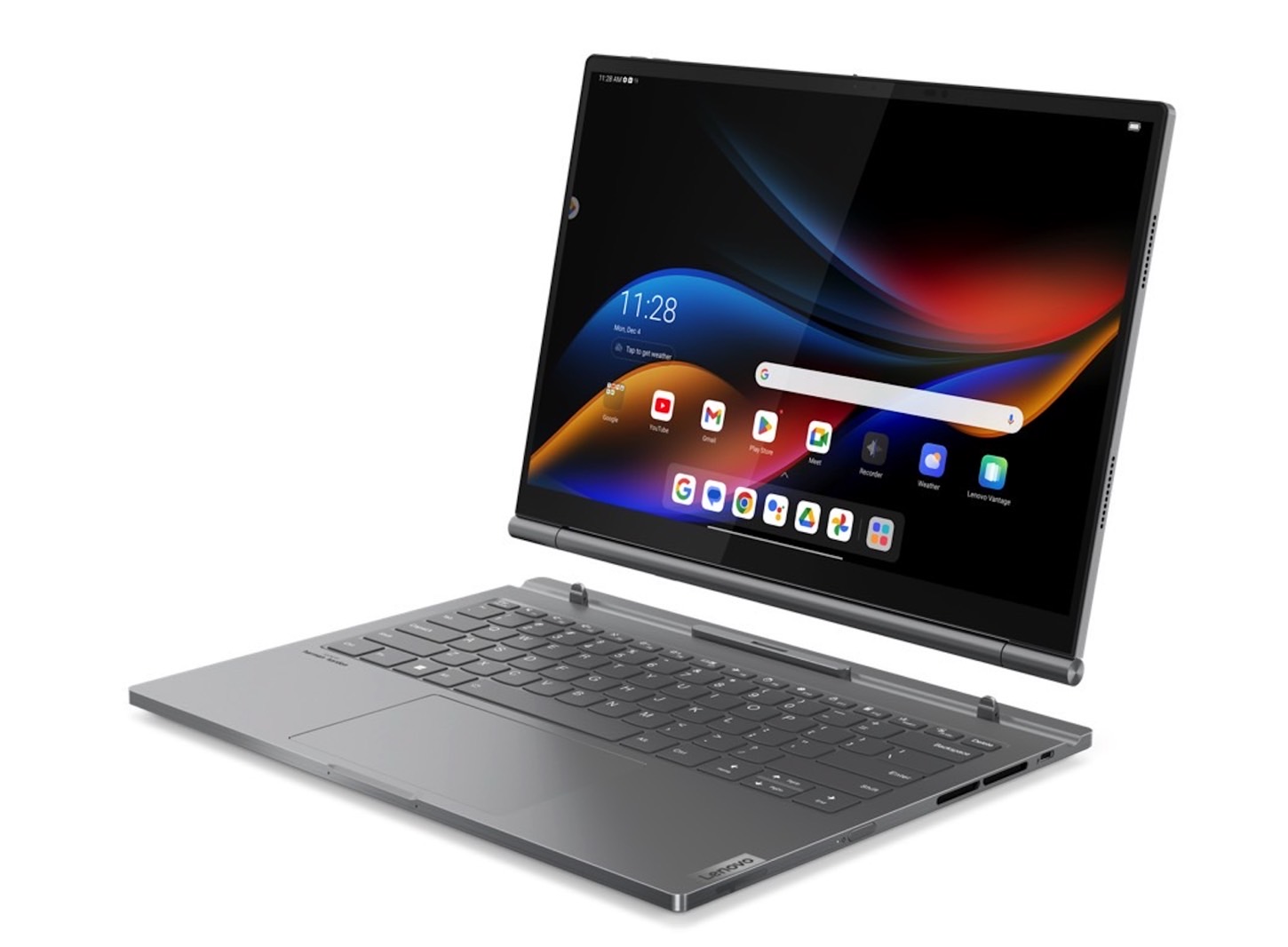
What Lenovo's 2-in-1 hybrid could use is a single processor that could run both Android and Windows apps. The Mac/iPad 2-in-1 I've been dreaming of would run both macOS and iPadOS apps thanks to Apple's own chips.
That said, you'll have to wait a while for the ThinkBook Plus Gen 5 Hybrid to hit stores. Lenovo plans to launch the ThinkBook Plus Gen 5 Hybrid in the second quarter, though there's no definitive launch date for it.
The Windows/Android hybrid PC is just one of the new computers Lenovo unveiled at CES; you'll find the rest of them at this link.
